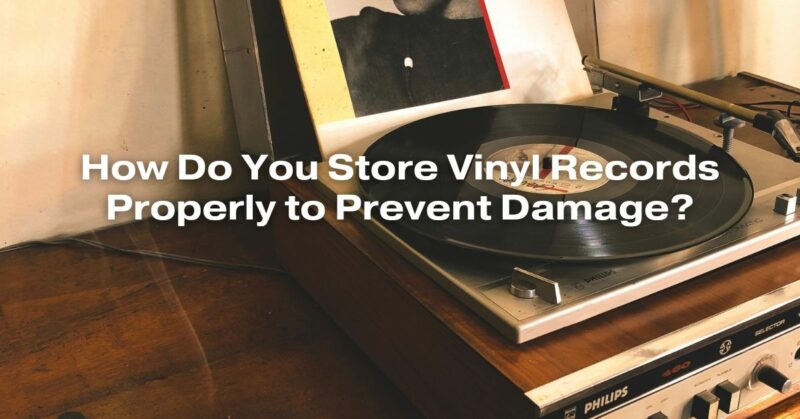Vinyl records are cherished relics of music history, offering a unique and authentic listening experience. Proper storage of vinyl records is crucial to maintaining their quality and preserving their nostalgic charm. Vinyl records, made from polyvinyl chloride (PVC), are susceptible to damage from various factors such as heat, moisture, dust, and mishandling. This comprehensive guide explores the best practices for storing vinyl records, ensuring their longevity and optimal sound quality for generations to come.
- Climate Control and Temperature
Maintaining a stable environment is vital for vinyl record preservation. Extreme temperatures, both hot and cold, can cause warping and distortion. It’s advisable to store vinyl records in a room with a consistent temperature between 65-70°F (18-21°C). Avoid placing records near heaters, radiators, or direct sunlight, as heat can warp the vinyl and damage the covers.
- Humidity Control
High humidity levels can lead to mold growth, while low humidity can cause the records to become brittle. Aim for a relative humidity level of around 45-50%. Using a dehumidifier or humidifier can help regulate humidity in the storage area.
- Vertical Storage
Vinyl records should always be stored vertically, like books on a shelf. Stacking records horizontally can lead to warping due to the weight of the stack. Use purpose-built record storage shelves to keep records upright, preventing any unnecessary pressure on the vinyl.
- Inner and Outer Sleeves
Each vinyl record should be placed in a protective inner sleeve. Invest in high-quality, anti-static inner sleeves made from polyethylene or polypropylene, which prevent scratches and static buildup. Additionally, outer sleeves made from polyethylene protect the album covers from dust and handling damage.
- Proper Cleaning
Before storing vinyl records, ensure they are clean. Use a carbon fiber brush or an antistatic record cleaning solution to remove dust and debris. Clean records not only sound better but also prevent dirt from causing damage over time.
- Handling and Care
Handle vinyl records with clean hands and avoid touching the grooves or the playing surface. Hold the record by its edges and center label to prevent fingerprints and oils from your skin from transferring onto the vinyl. Always place records back into their sleeves after use to prevent scratches.
- Storage Boxes
Consider storing your vinyl records in purpose-built record storage boxes. These boxes are typically made from sturdy materials and provide additional protection against light, dust, and physical damage. They are especially useful if you need to transport your collection.
- Avoid Overcrowding
Don’t overcrowd your shelves or storage boxes. Leave some space between records to allow for proper air circulation. Overcrowding can lead to warping and make it challenging to remove records without causing damage.
- Regular Inspections
Periodically inspect your vinyl records for signs of damage. Check for warping, mold, or mildew. Catching these issues early can prevent further deterioration and allow you to take appropriate action, such as cleaning or re-sleeving damaged records.
Conclusion
Properly storing vinyl records is essential for preserving their quality and ensuring they remain a source of musical enjoyment for years to come. By following these guidelines, vinyl enthusiasts can protect their cherished collections from the ravages of time, maintaining both the aesthetic and sonic integrity of their records. With the right care and attention, vinyl records can continue to bring the magic of music into our lives, connecting generations through the joy of analog sound.


